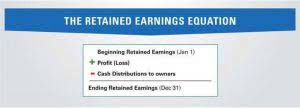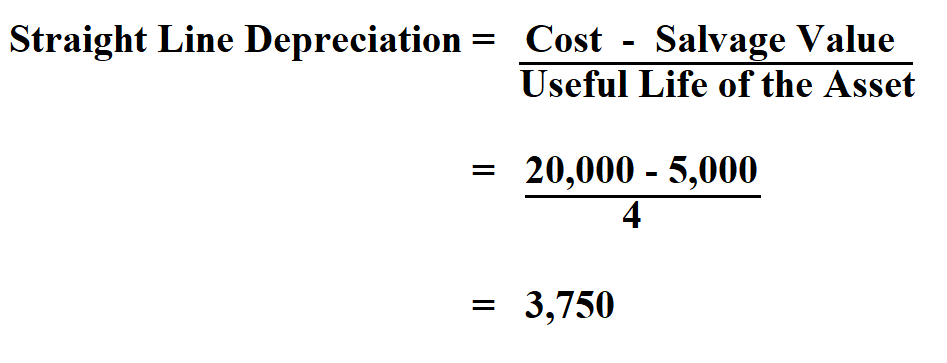
The average organization uses over 1,000 different applications — but less than 30% of these apps are integrated. With this feature, you can schedule the system to automatically generate and send invoices for recurring charges, such as subscriptions. You can choose how frequently invoices are sent — daily, weekly, monthly or annually — and indicate whether there’s an end date to the billing. Once the software is installed, be sure to provide adequate training to all the users. Depending on the complexity of the software, this might include videos or in-house training.

Use your cloud accounting software right away
- Whether they’ve previously reached out via phone, chat, email, or social media, a single source of truth ensures everyone at your company can provide the expected level of service.
- For companies wanting efficiency and a competitive edge, cloud accounting with strong integrations is the way to go.
- These servers are genuinely placed in large rooms or warehouses and are connected to the internet.
- Alternatively, instead of moving files from your hard drive to the cloud, you can also duplicate them and create a backup.
- While providers offer a variety of capabilities, customization may be limited.
- The information is encrypted, much like a bank’s, so only people with the login can view the data.
However, there are some less expensive alternatives to QuickBooks you may consider, such as Wave and FreshBooks. QuickBooks dominates the market for small business accounting software in the US with a market share of 81%. The next two most popular accounting software are Sage 50 with 10% and Xero with 9%. Customer service is evaluated based on the number of communication channels available, such as phone, live chat, and email. Companies also receive points based on other resources available, such as self-help articles and user community.
things to look for in an ERP system
When your cloud needs fluctuate, your server capacity scales up and down to fit, so you only use the energy you need, and you don’t leave oversized carbon footprints. Removing the need for physical storage also eliminates much of the waste and pollution that comes with discarding hard drives, paper and ink. Forward-thinking firms such as MHA Carpenter Box employ cloud experts.
Why We Chose Zoho Books
- With a cloud accounting platform in place, you can record, track and pay your VAT and tax in the digital space and stay MTD-compliant.
- That means, unlike traditional software where you’d have to manually schedule in an update, you’ll never be left using out-of-date programs or locked out of your software and records while they update.
- The modular pricing model of SaaS allows customers to pay only for what they need, when they need it.
- Cloud accounting has emerged as a game changer for businesses, providing various benefits in this world of technology and innovation.
- The best accounting software enables easy collaboration between you and your accountant.
With this definition of cloud computing, we can easily grasp what cloud accounting is, and it’s essentially accounting that works within the cloud computing model. Neat’s built-in document management with unlimited monthly storage makes it an incredibly useful tool for businesses that accumulate a lot of expenses and receipts each month. The cloud accounting ecosystem allows for automated bookkeeping, automated cash collection and automated bank reconciliation, all of which radically cuts down on your team’s admin workload.
Diagnostic Framework Business Process Flow

With QuickBooks, you can easily see what comes in and goes out of your business and take charge of your finances. QuickBooks allows you to track and organize your accounting data and generate a cash flow statement. The cash flow statement helps you to know how much money is coming into your business so that you can make your vendor payments accordingly.
Online solution

The main advantage of upgrading to the Pro tier is that it supports unlimited users, which can be useful for small businesses or freelancers working with a team. The most important added feature is automatically importing and categorizing your expenses from a bank feed. With the free plan, you can import bank transactions from a statement and then manually categorize them. Wave is our recommended free solution for small business accounting and our overall best free accounting software. It includes free bookkeeping, invoicing, and expense tracking features, making it a great fit for freelancers and small businesses with simple accounting needs.
- If something goes wrong on their end when rolling out an update, it can lead to unforeseen downtime, data loss, or reset functionality.
- The ability to use cloud technology may be the most significant difference between cloud accounting and traditional accounting.
- For example, using cloud software, if your laptop is stolen, no one can access your data unless they have a login to the online account.
- Cloud accounting (or online accounting) has all the same functionality as desktop accounting, but moves the whole process to the cloud and expands upon it.
- More and more work is now being done remotely, and being done online.
Top benefits of cloud accounting software
The majority of cloud-based accounting vendors offer software as a service (SAAS) in place of license for such software. But you need to choose the one that fulfills your business requirements. Below are certain key points that you need to consider when selecting cloud bookkeeping and accounting software for your business. With companies increasingly shifting towards remote cloud accounting working, it is important that your accounting software allows you to manage your books of accounts on-the-go. If your accounting software requires you to be desk-bound, it is certainly an indication that you need to switch to cloud-based accounting. You are losing serious business to your competitors if your accounting software does not support the multi-currency feature.
Commerce teams can quickly launch and scale ecommerce — from online orders to curbside pickup — for their consumer shoppers (B2C commerce) and business buyers (B2B commerce). And customer service agents can respond to customer needs on any channel — from the office, at home, or in the field. Unlike the early days, today’s CRM software lives in the cloud, giving you the ability to safely save and access all of your customer data from anywhere at any time. That means every employee has the same information in real-time, and can make updates wherever they are. It keeps companies organized and focused on revenue-driving activities.








